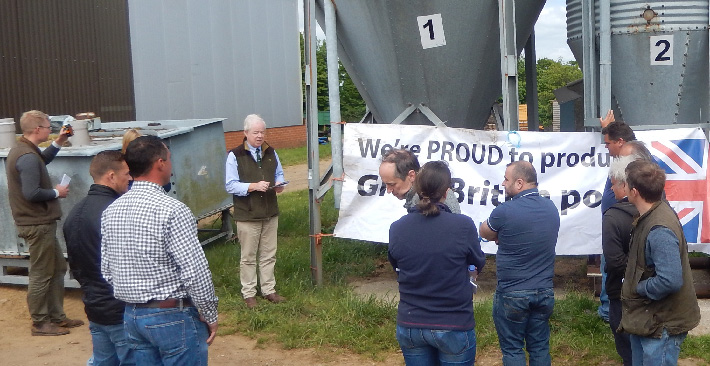As reported last week, clear signs are emerging that the irresistible price rise due to the African swine fever epidemic in the Far East and many other parts of the world is putting a much needed boost into global pig meat prices – and is finally filtering through to the UK after a long wait.
Although the latest SPP only went up by .27p to 158.61p, there is still a lot of catching up to do and the weekly contribution prices are still lagging behind the spot market, where bids in the region of 165p/kg have been mentioned, but very few spare pigs are available.
Signs of a surge in pig prices were recently seen in the German market, where over the past three weeks, the producer price has risen by 16 cents to stand at €2.01, which is equivalent to 171.5p in our money so there is still a fair bit of catching up to do before we are on level terms with our European (former) partners.
Weekly contribution prices are (surprise surprise) still only moving up by small steps rather than the great strides we have seen in Europe and weekly contribution prices of between 156-160p are now a long way adrift of the real world.
Another slightly negative note however, is that fresh meat wholesalers are still finding that domestic demand is relatively quiet and despite the “bonus” of the ASF trade, still remains somewhat muted not helped by recent TV coverage of the whole red meat industry and the effects that this may have on global warming. which will become a bigger issue in the years ahead in the eyes of many.
Cull sow prices are also soaring after too long in the doldrums, with UK exporters increasing their bid prices by up to 6p/kg with the majority in or slightly above 120p/kg according to load size.
The euro has remained relatively stable, trading today worth 85.39p compared with 85.92p a week ago but it certainly looks as though this Christmas could be one where pig breeders are receiving rather than giving which makes a pleasant change.
Weaner prices have yet to fully reflect the lift in pig values, with the latest AHDB 7kg ex farm average quoted at £42.06 but no figures are available for 30kg weaners which are generally trading around £55-£60, depending on whether they are Red Tractor or RSPCA Assured.
However, like racehorse jockeys, pigs are likely to be very light and short in the months ahead and although some feed prices are creeping up, there should be good margins for finishers.
Producers should also keep a wary eye on feed prices with January 2020 feed wheat traded at £150/t and September 2020 at £158/t, but feed barley looks better value at £131/t for January 2020 and £142/t for September 2020.
Protein values have fallen a shade with January-April ’20 Hipro soya trading at £293/t and for May-October 2020 at the same price.
After the sodden autumn weather, straw prices could rise next harvest especially if the wet weather continues, at a time when a lot of winter cereals have not been established in wetter parts of the country.
And finally, more on the ASF situation and the possible risk of a “sweet and sour” outcome if the US can negotiate a zero-tariff access to China for US pork.
This could be an economic windfall for their farmers with the availability of cheaper pork but could reduce global values to some extent if the existing 72% tariff is dropped to zero. It will be interesting to see if Donald Trump agrees to help the American hog farmers and negotiate a zero Chinese tariff.




